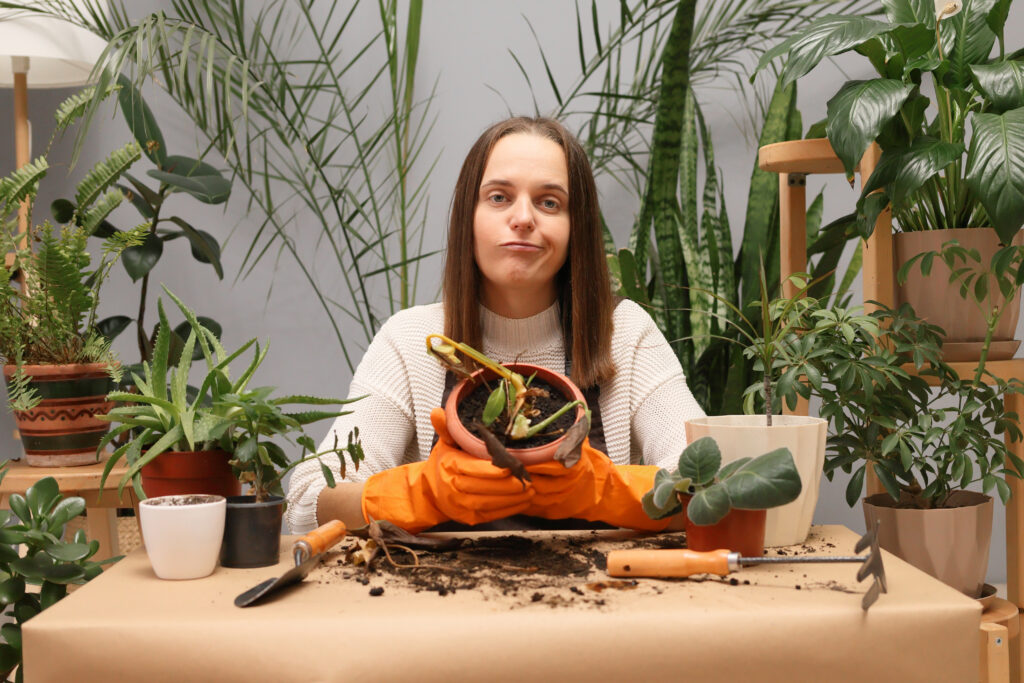Indoor gardening can be an incredibly rewarding hobby, but it’s not without its pitfalls. For beginners, the journey to becoming a successful indoor gardener often involves learning from mistakes. By understanding and avoiding these common errors, you can create a thriving indoor garden from the start. Let’s explore the most frequent mistakes and how to prevent them.
The Watering Dilemma
One of the most common mistakes new indoor gardeners make is improper watering. Many beginners fall into the trap of overwatering their plants, believing that more water equals more care. This couldn’t be further from the truth. Overwatering can lead to root rot, fungal growth, and ultimately, plant death. Instead of following a strict watering schedule, learn to read your plants’ needs. Check the soil moisture level by inserting your finger about an inch deep into the soil. Only water when the top layer feels dry.
Underwatering, while less common, can be equally detrimental. Plants that are consistently underwatered develop weak root systems and become stressed, making them more susceptible to pests and diseases. The key is finding the right balance and understanding that different plants have different water requirements.
Lighting Errors and Solutions

Another critical mistake is misunderstanding plant light requirements. Many indoor gardeners place sun-loving plants in dark corners or shade-loving plants in direct sunlight. This fundamental error can quickly lead to plant deterioration. Direct sunlight through a window is not the same as outdoor light, and the intensity can vary significantly throughout the day and seasons.
To avoid this mistake, research your plants’ specific light requirements and observe how light moves through your space throughout the day. South-facing windows provide the most light, while north-facing windows offer minimal direct sunlight. Consider using light meters or apps to measure light levels in different areas of your home, and group plants with similar light requirements together.
Temperature and Humidity Challenges
Many indoor gardeners overlook the importance of temperature and humidity control. Most houseplants prefer temperatures between 65-75°F (18-24°C), but proximity to heating vents, air conditioners, or drafty windows can create microclimates that stress plants. Similarly, indoor humidity levels are often too low for tropical plants, especially during winter months when heating systems dry out the air.
To address these issues, keep plants away from direct air flows and consider using humidity trays, grouping plants together, or running a humidifier. Monitor both temperature and humidity levels regularly, and make adjustments as needed. Remember that sudden changes in either factor can shock plants, so gradual transitions are always better.
Soil and Container Considerations
A significant mistake that many beginners make is using outdoor garden soil for indoor plants or reusing old potting soil without amendment. Garden soil is too dense for container growing and may harbor pests or diseases. Similarly, choosing containers without proper drainage or using decorative pots without drainage holes sets plants up for failure.
Invest in high-quality potting mix specifically formulated for indoor plants, and ensure all containers have adequate drainage holes. When repotting, choose containers that are appropriately sized – too large a pot can lead to overwatering issues, while too small a container restricts root growth and nutrient uptake.
Fertilization Mistakes
Both over-and under-fertilizing are common mistakes in indoor gardening. Many beginners either forget to fertilize altogether or go overboard with feeding their plants. Most houseplants need very little fertilizer during winter months when growth naturally slows. Over-fertilizing can lead to salt build-up in the soil and damage root systems.
Develop a balanced fertilization schedule based on each plant’s growing season and needs. Use a balanced, water-soluble fertilizer at half the recommended strength, and always apply to moist soil to prevent root burn. Remember that it’s better to under-fertilize than to over-fertilize – plants can recover from nutrient deficiencies more easily than from fertilizer burn.
Pest Management Oversights
One of the biggest mistakes indoor gardeners make is failing to regularly inspect their plants for pests or waiting too long to address pest issues when they arise. Regular inspection should become part of your plant care routine. Check both the upper and lower surfaces of leaves, stem joints, and soil surface for signs of common pests like spider mites, mealybugs, or scale insects.
When acquiring new plants, always quarantine them for at least two weeks before introducing them to your existing collection. This period allows you to monitor for any pest or disease issues that might not be immediately visible. Many experienced gardeners keep a designated quarantine area specifically for this purpose.
Pruning and Maintenance
Neglecting regular pruning and maintenance is another common mistake. Many indoor gardeners are hesitant to prune their plants, leading to leggy growth, reduced bushiness, and overall poor plant health. Regular pruning encourages fuller growth, removes dead or dying foliage that could harbor diseases, and helps maintain the plant’s desired shape and size.
Learn basic pruning techniques for different types of plants, and don’t be afraid to remove damaged or unhealthy growth. Clean your pruning tools between plants to prevent the spread of diseases, and save healthy cuttings for propagation when possible.
The Importance of Research
Perhaps the most fundamental mistake is failing to research plants before bringing them home. Each plant species has specific care requirements, and what works for one may spell disaster for another. Take time to learn about your plants’ natural habitats and growth patterns. Understanding these basics will help you provide the right conditions for each plant to thrive.
Remember that successful indoor gardening is a learning process. Don’t be discouraged by early mistakes – even experienced gardeners face challenges. By avoiding these common pitfalls and learning from any missteps along the way, you’ll be well on your way to creating a thriving indoor garden that brings beauty and life to your space for years to come.




